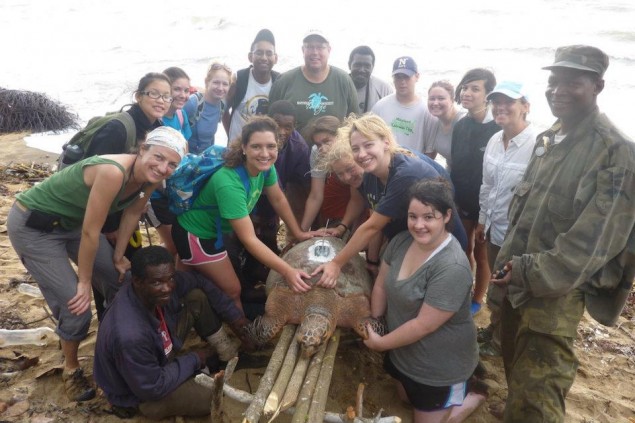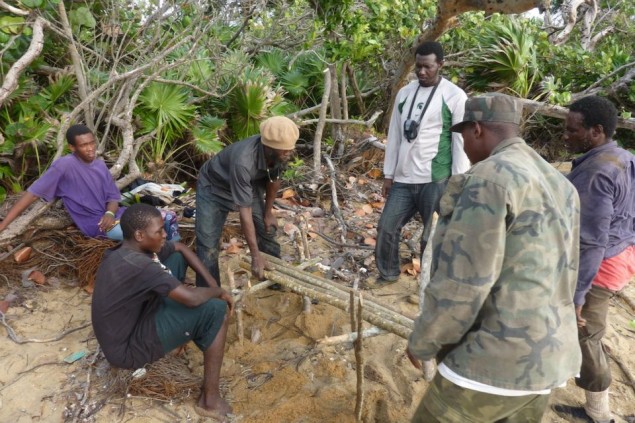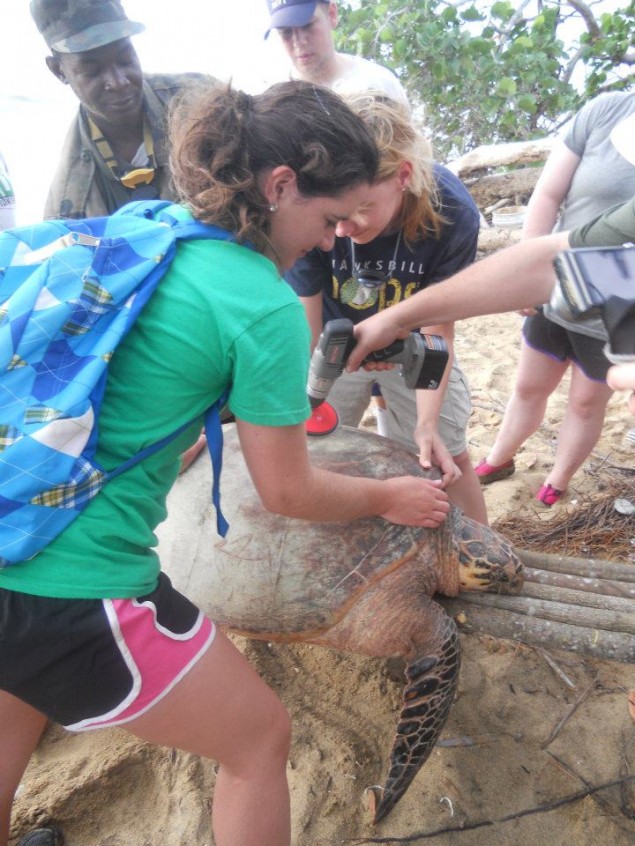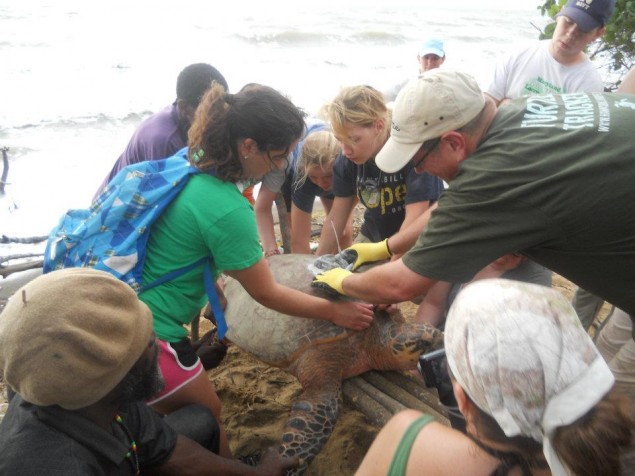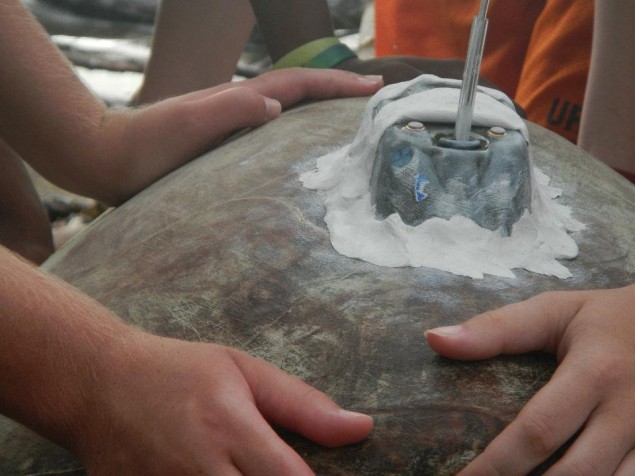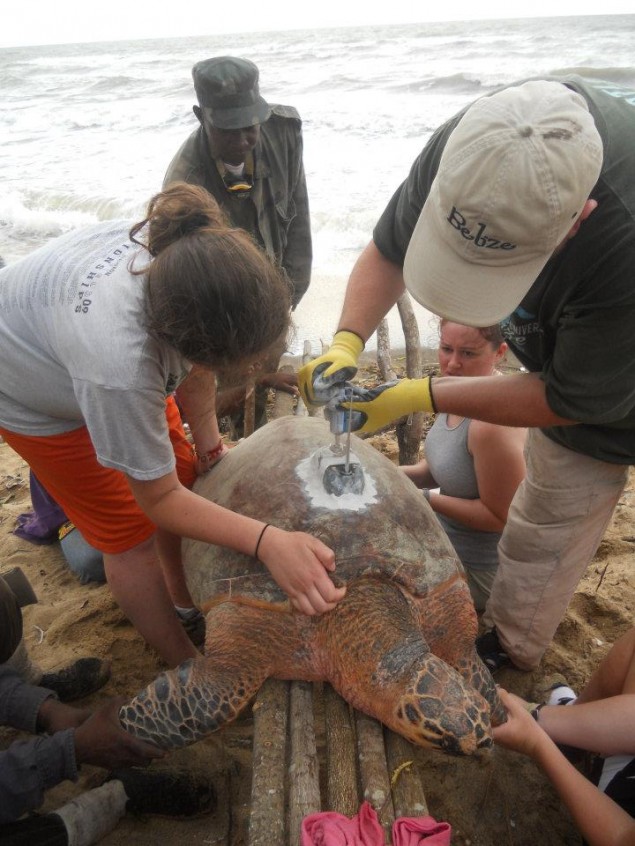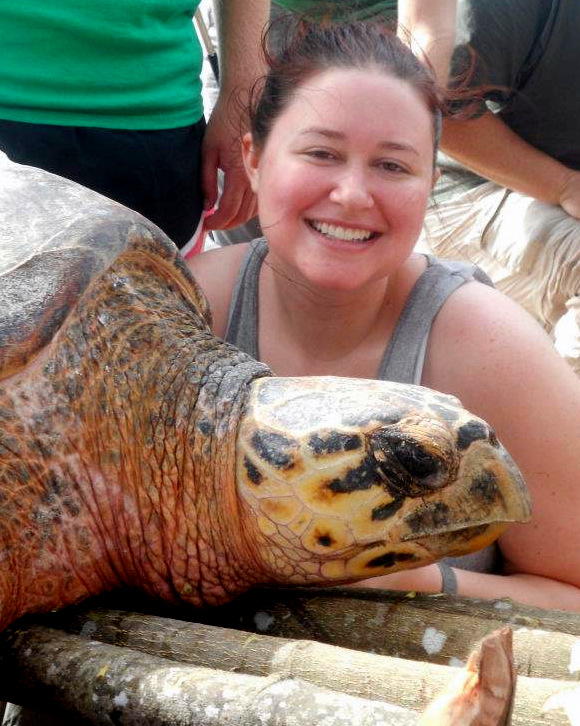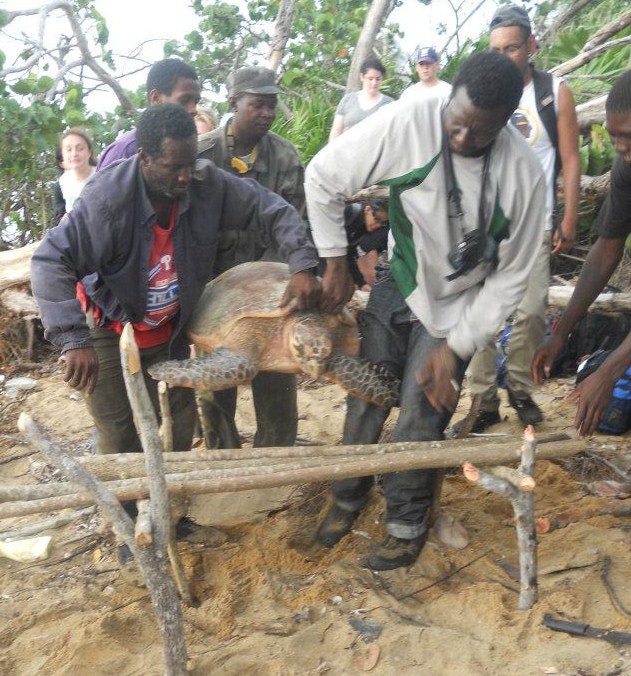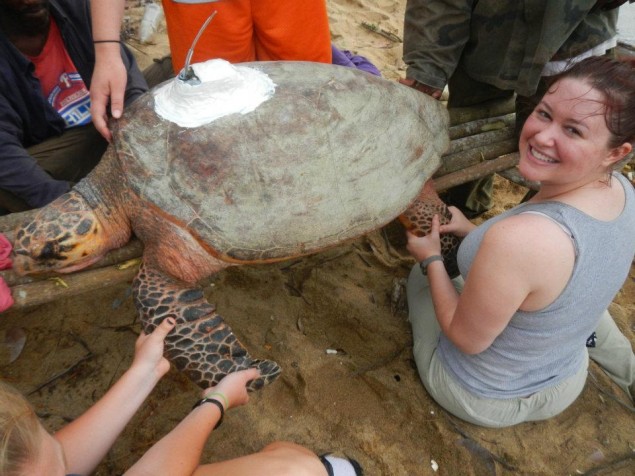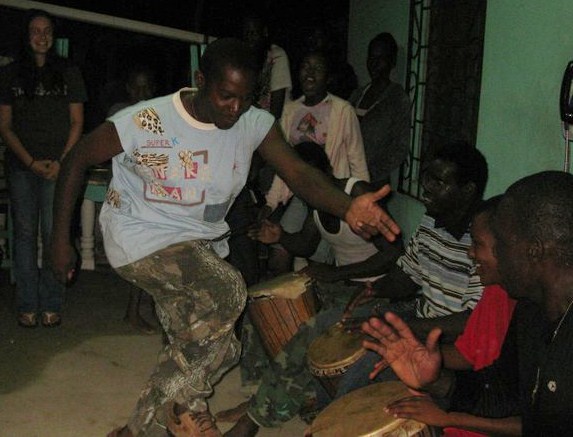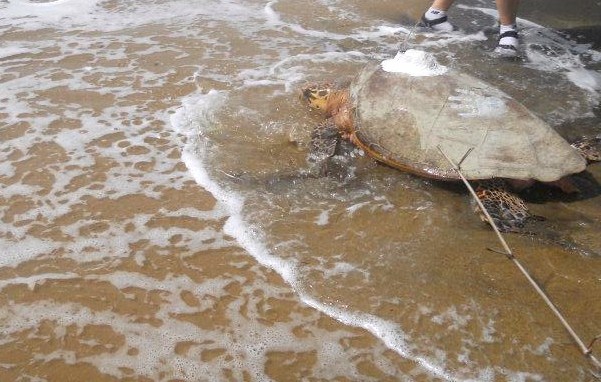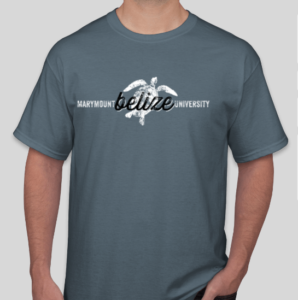Tagging Moochula the Hawksbill Turtle
Less than a week after arriving in Belize, Dr. Rimkus & our team of Turtle Trackers have already obtained our goal! We found and attached a satellite tag to a hawksbill sea turtle (Eretmochelys imbricata).
For a little bit of a background, at Marymount University, Dr. Rimkus and his students do ongoing satellite telemetry research through Hawksbill Hope. Satellite telemetry is a great way to track animals who make long migrations (such as sea turtles) because the tag itself, which is attached to the animal being tracked, sends GPS data to satellites overhead, and then from the satellite to your computer. Anyone can see a map where our turtles are online at seaturtle.org.
We work specifically with hawksbill sea turtles. They are especially important because they are critically endangered, and because they are carnivorous they ecologically benefit the beautiful, fragile coral reefs in Belizean waters. (They eat things that might compete with or harm the living coral.) Kevin Andrewin, a native Belizean, has been doing research on these turtles for many years, and we come to help him out.
Now for the exciting story!
We have already tagged our first turtle this year! Yesterday morning, Sunday the first of July, a team of Turtle Trackers called Dr. Rimkus to tell him to hurry over with a satellite tag because a hawksbill turtle was ready and waiting! The Turtle Trackers had been walking up and down the beach where the female hawksbills come to lay eggs, and that’s how they found our girl. (The job of Turtle Tracking involves miles and miles of walking in sand and jungle through litter and seaweed in the middle of the night; it is no easy gig!) She was trapped under trees and branches on her way back to the ocean, and had to be dug out. When we arrived with the tag, she was placed on a makeshift platform so that her flippers couldn’t touch the ground. That way, we could glue the satellite tag to her shell without her being able to run away. It still took at least 6 people to hold her up, though!
First, a small area of her upper shell (carapace) had to be sanded, towards her head. This helps the glue hold on better.
A patch of putty-like epoxy glue attaches the satellite tag to the shell, which then has to dry for about an hour.
Then, more gooey, waterproof epoxy is poured over top of the tag (except for the antenna and the sensors). That has to dry for between 45 minutes and 2 hours.
Once the glue has solidified, the turtle can be released back in the water, but before that she has to be held the entire time! I was lucky enough to hold one of her front flippers for awhile, and give her some loving stares into those dreamy big black eyes. Eventually I just had to give her a kiss on the forehead.
Luckily, this turtle was very cooperative, possibly because she was so tired out from being stuck on the beach. We really appreciated that, because she was HUGE! Kevin asked one of the “professional” native Belizean Turtle Trackers what he estimated her weight to be, and he said “700 pounds!” We laughed, and Kevin decided that she was actually probably between 150-170lbs. For perspective, the largest hawksbills get is about 175lbs.
Kevin also estimated that she was at least 100 years old. But she was also very beautiful, with a surprisingly clean shell and only a couple barnacles. It will be interesting to get back her satellite data to find out where she goes to keep her shell so clean!
While we were waiting for the glue to dry, we thought up some names for her. I thought up a couple of silly ones, and others thought up some pretty or girly names. None of them were quite right. Sarah Gulick thought to ask Leonard Myers, the native Belizean Turtle Tracker who actually found her on the beach. At first he didn’t want to suggest anything, but Sarah talked him into telling us what his idea was, and it’s a good thing she did because he is the one who came up with “Moochula!” Moochula is pronounced “mOO-chuh-lah,” and it is a Creole word that is indigenous to the village we are staying in (Gales Point) which means “fine,” “nice,” “kind,” or “girl I want to dance with,” depending on who you ask. Because it is a local word from an unwritten language, the definition is undefined, and we had to make up the spelling. But the coolest thing about this name is that it comes from the lyric of a traditional Gales Point drum song! How many turtles do you know who have their very own songs?
Finally, once her glue dried and she had been named, Sarah wrote “HAWKSBILL HOPE MARYMOUNT UNIVERSITY” on the tag. Dr. Rimkus and Kevin checked to see if she was carrying any eggs, but she wasn’t; she must have laid them before getting stuck on the beach and hopefully we will find her nest later. The professional Trackers released her as we all watched. She quickly dashed to the ocean and I immediately wished we’d gotten to spend more time with her. She’s a special lady!
Special thanks to Carol Wong, Stephanie Marzullo, and Sarah Gulick for capturing the moments!
 Hawksbill Hope
Hawksbill Hope